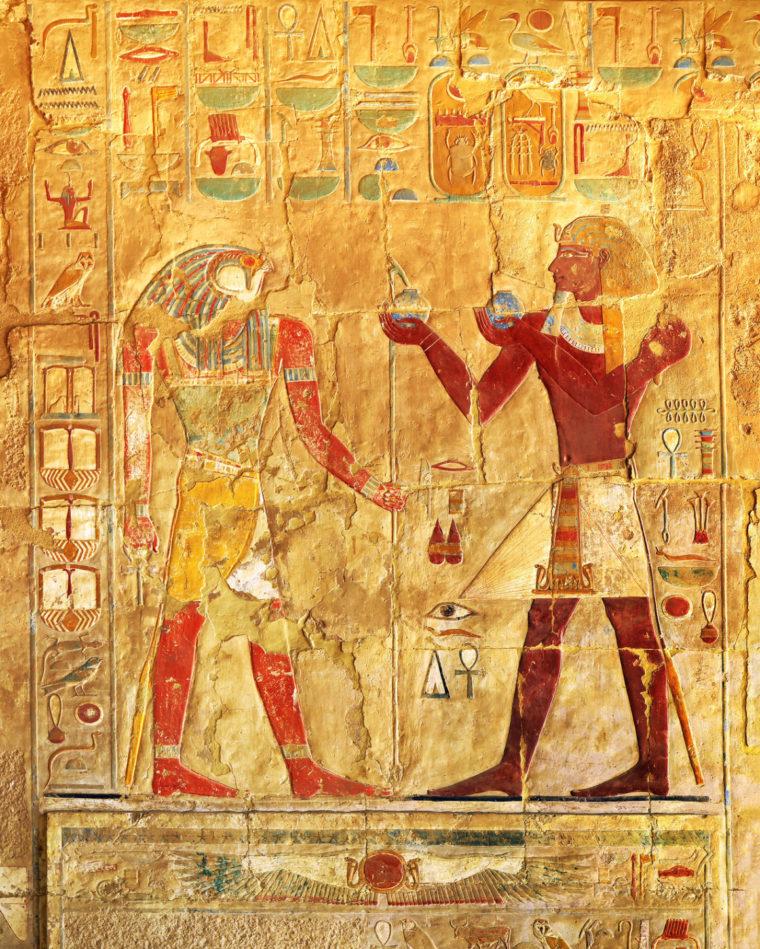The exact historical time frame of beer is debatable. Experts have placed beer’s creation as being between 7,500 to 10,000 years ago. Historians do agree that beer was probably developed independently in several different cultures, beginning with the Sumerians in southern Iraq (Mesopotamia) which is the earliest known civilization in the world. It’s definitely known that beer was part of the daily diet of Egyptian Pharaohs over 5,000 years ago.
The first chemical evidence of beer dates back to 3500-3100 B.C. in what is now Iran. That makes beer the oldest drink known to mankind. Beer drinking accessories have been found in Israel that date back to nearly 2000 BC. During the Roman civil war (49–45 BC), Caesar and his troops introduced beer to Northern Europe creating a whole influx of brewing activity.
Many of the monasteries in Europe began producing beer as it was a nourishing beverage that they could consume in the monastery. Sometime in the 600s A.D., monks in Europe began exporting beer to fund their monasteries. In Europe during the Middle Ages, beer was consumed with almost every meal. In England, beer consumption annually averaged over sixty gallons per individual.
In the thirteenth century, Germany began making hopped beer and started to export it in barrels in great quantity. Hops made beer last longer. In England and other countries hopes in beer was met with fierce opposition because people felt the bitterness distorted the taste of beer. Hops are still used today to give beer its distinctive flavoring. The female cones of the hop plant are used in beer making.
In medieval times, beer was usually brewed in home operations but by the fifteenth century small commercial breweries started to appear. The English continued to brew beer without hops which they referred to as ale. The name beer only applied to recipes with hops. In the sixteenth century ales and beers were both made with hops. At that point the word ale was used to refer to beers that were extra strong.
The first Bavarian purity law in 1516 carries importance in beer history. The law mandated that the only ingredients in beer could be water, barley and hops. Yeast was added to the mix when discovered in the 1850s. The Industrial Revolution changed everything about beermaking. The invention of the hydrometer in 1770 following the thermometer in 1760 revolutionized the process of beer making. Pale malt became the primary malt used because it increased yields.
Today’s beer, especially in America, is the result of a major consolidation of beer companies after World War II. A few large companies took over many breweries and began brewing all types of beer, mild and pale ales, lagers, wheat, and darker beers.
In the 1980s, microbreweries came to many regions to produce local beers. The brewing industry is one which seems impervious to ups and downs in the economy. The demand for beer has remained strong since the beginning of time and shows no sign of waning.
The oldest beweries in the world are:
- Weihenstephan Brewery – Weihenstephan, Germany (1040)
- Weltenburg Abbey Brewery – Kelheim, Germany (1050)
- Bolten Brewery – Korschenbroich, Germany (1266)
- Hubertus Brewery – Laa an der Thaya, Austria (1454)
- Stiegl Brewery – Salzburg, Austria (1492)
- Grolsch Brewery – Groenlo, Netherlands (1615)
- Three Tuns Brewery – Shropshire, England (1642)
- Smithwick’s Brewery – Kilkenny, Ireland (1710)
- Molson Brewing – Montreal, Canada (1786)
- Stepan Razin Brewery – St. Petersburg, Russia (1795)
- Yuengling – Pottsville, PA USA (1829)
- Victoria (Compañía Toluca y México) – Mexico (1865)
The five largest beer manufacturers in the world are by largest first:
- Anheuser-Busch
- Asahi
- Heineken
- Scottish & Newcastle
- Beck’s

